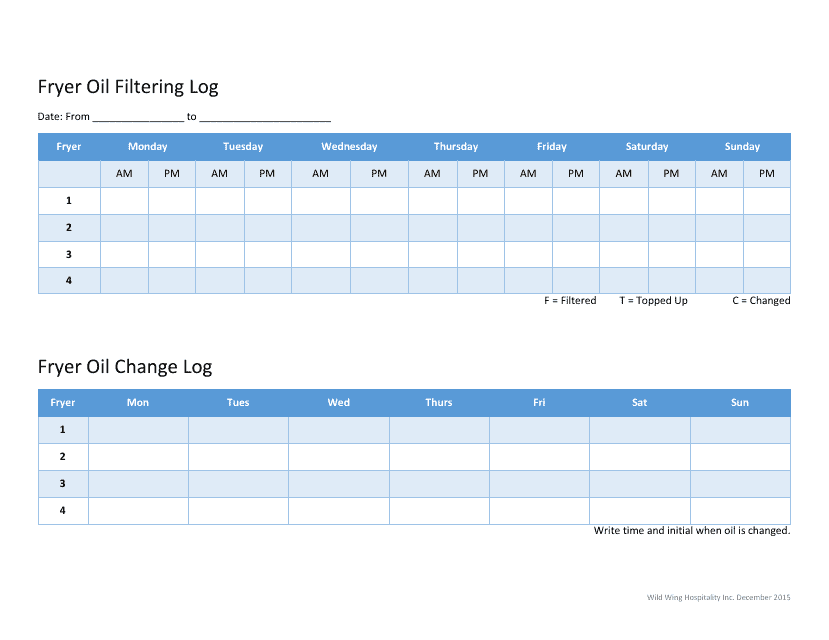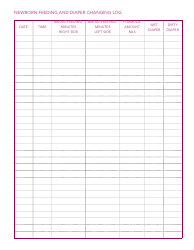Fryer Oil Filtering / Change Log Templates
Fryer Oil Filtering/Change Log Templates are used to keep track of when the fryer oil was last filtered or changed. It helps to ensure that the oil is properly maintained to maintain food quality and safety.
In the United States, the responsibility of filing Fryer Oil Filtering/Change Log Templates typically falls on the restaurant or establishment that uses the fryer. However, specific filing requirements may vary depending on state and local regulations. It is recommended to consult local health and safety guidelines for more information.
FAQ
Q: What is a fryer oil filtering/change log template?
A: A fryer oil filtering/change log template is a document used to track and record the filtering and changing of fryer oil in a restaurant or commercial kitchen.
Q: Why is it important to use a fryer oil filtering/change log template?
A: Using a fryer oil filtering/change log template helps maintain the quality of the fryer oil, ensures proper maintenance of equipment, and helps with food safety and hygiene.
Q: What information is typically included in a fryer oil filtering/change log template?
A: A fryer oil filtering/change log template typically includes the date of filtration/change, the fryer number or location, the amount of oil filtered/changed, and the signature of the person responsible.
Q: How often should fryer oil be filtered/changed?
A: The frequency of fryer oil filtration/change can vary depending on factors such as usage, type of food being cooked, and equipment recommendations. It is generally recommended to filter/change fryer oil every 1-2 weeks or when it becomes visibly dirty or starts to affect the taste of the food.


